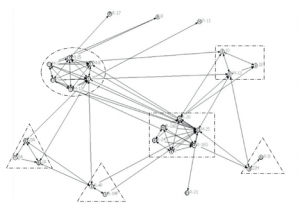Examining Nature of Relationships to Neighbors in Adoption of Agricultural Technology
In class so far, our discussion of social network theory has been limited to looking at the number of neighbors using certain behaviors or technologies. In The Influence of Social Networks on Agricultural Technology Adoption, the authors also consider the quality of relationships to neighbors. Specifically, the authors examine this additional factor in the context of the adoption of new agricultural technology. When faced with the option of switching to a new technology, an individual (in the scope of what we learned in class) considers what fraction of his neighbors are already using the new technology. If this fraction exceeds a personal threshold, then the individual will switch to the new technology; if not, the individual will stick with his current technology. This article expands on what we learned in class by also analyzing the nature of the relationships to one’s neighbors.
In the paper, the authors consider three types of relationships: family relationships, landowner-tenant relationships, and organizational relationships. Family relationships is described in further detail, stating that knowledge passed between generations might have more power in influencing the adoption of technology. Tenant-landowner relationships are described not only as tenants forming relationships with their landlords, but also between multiple tenants of the same landlord. The authors state that “the interests, activities and decisions of one tenant can indirectly influence other tenants through exchanges with the same landlord.” Organizational relationships are further explained as farmers joining “consultancies, professional associations, and clubs.” Through these, they gain access to external knowledge that can encourage the adoption of new technology.
The above diagram, which was included in the paper, shows that upon mapping the social network, there were several clusters of nodes. The authors found that these clusters formed as a result of kinship, tenure, and affiliation. These clusters, the authors noticed, all tended to use the same technologies. This makes sense given what we have learned about social network theory in class. When clusters are present, they have certain densities; a high density value, s, typically indicates that it will be much harder to convert the nodes of that network to a new technology. This is exactly what was found in the social network discussed in the paper; all of the clusters tended to use the same technology.
Due to time restrictions, in class we are obviously limited with regard to how in-depth we can go with a topic. However, in many cases, there are other, very interesting aspects of topics that we don’t get to fully explore. For example, the nature of relationships in social networks is not something I had considered before coming across this article. Being able to look beyond what we learn in class to further explore social network theory can be extremely valuable and make concepts from class much more applicable to real-world scenarios.
Link: http://www.sciencedirect.com/science/article/pii/S1877042813010288
